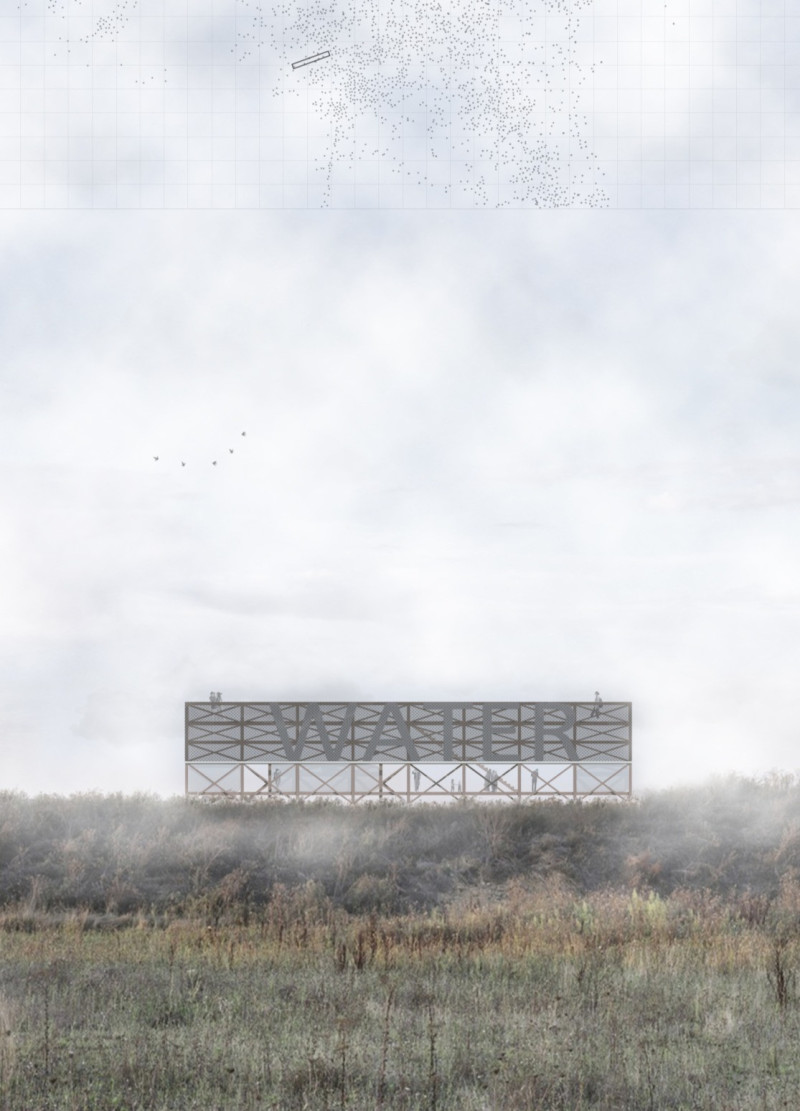5 key facts about this project
The pavilion functions as a sustainable solution to water scarcity, emphasizing the need to collect atmospheric moisture efficiently. Located in an area affected by climate change, the design prioritizes accessibility to water through an innovative fog-catching system. It blends practical utility with community function, allowing users to engage with both nature and each other.
Design Concept
The design centers on multifunctionality, where the structure serves both as a water collector and a community space. Inspired by natural processes, the fog-catching mechanism gathers tiny droplets that could otherwise be lost. The form of the pavilion is informed by its environment, aiming to create a harmonious relationship with the landscape around it.
Materiality
Constructed from wood that is certified for sustainability, the pavilion reflects a commitment to responsible building practices. Wood provides strength while adding a welcoming feel to the structure. This choice not only supports its function but also highlights the importance of environmentally friendly materials in modern design.
User Interaction
Accessibility is central to the design, with an internal ladder allowing visitors to explore different levels. This feature enhances their connection to the outdoors, offering observation points to appreciate the surrounding scenery. Long benches are integrated into the layout, promoting social interactions and providing places for visitors to gather and rest.
The pavilion prominently displays the word "WATER," a clear reminder of the importance of conservation. A gutter system directs collected rainwater to storage containers, ensuring that this valuable resource is managed effectively for the community's use.



















































